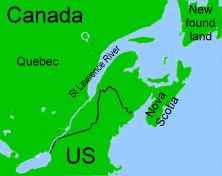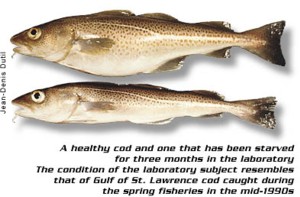|
V RaptureChrist Newsletter
|
||||||||||
How can something so big die? Covering over 70% of the surface of Planet Earth, the oceans provide us with 80% of the oxygen produced. We depend on them for our survival. The oceans depend on nutrients from rivers to sustain life, but if too much nitrogen is added, then the aqueous environment promotes algal dominance and the water turns murky green - this is called a phytoplankton bloom. These phytoplankton blooms de-oxygenate the water when the overabundant algae die, fall to the bottom, and begin to slowly decompose turning the bright green water into a nasty blackish green blob of slimy dead water. The surface of the ocean changes from deep blue to a bright vivid green similar in color to a pool without chlorine. This foul murky water does not allow sunlight to penetrate so corals and other sea life begins to die off. It is artificial fertilizers from farmers' fields that leach into rivers and streams. This nitrogen/phosphorus runoff causes the dramatic green phytoplankton blooms in the ocean. The 2003 report from the Pew Oceans Commission says that over 60 percent of our coastal rivers and bays are moderately to severely degraded by excessive nutrient runoff. Klaus Toepfer,
UN environment programme (Unep) Executive Director, said: “Human-kind is engaged in a gigantic, global, experiment as a result of the inefficient and often over-use of fertilizers, the discharge of untreated sewage, and the ever rising emissions from vehicles and factories. The nitrogen and phosphorous from these sources are being discharged into rivers and the coastal environment or being deposited from the atmosphere, triggering these alarming and sometimes irreversible effects.” According to Klaus Toepfer there are 150 dead zones or oxygen starved areas in the oceans of the world, caused by excessive levels of nutrient load (mainly nitrogen) in river water. For example, the dead zone just off Louisiana in the Gulf of Mexico is the size of the state of New Jersey about 22,000 square kilometers. Every year, the Mississippi and Atchafalaya Rivers dump 1.6 million metric tons of nitrogen (mostly nitrate) from agricultural fertilizers into the Gulf of Mexico. These amounts are about three times what was dumped in the 1950's. Farmers are responsible for most of this nitrogen. The Gulf of Mexico dead zone is growing in size as more nitrogen comes in every year from the Mississippi River, but there are other much larger major dead zones. In Europe, the Eastern Baltic is a permanent dead zone -- over 100,000 square kilometers; the Adriatic Sea in the Mediterranean, and the entire Black Sea below the pycnocline are also permanent dead zones. New dead zones are developing. There is now a new dead zone that formed in Chesapeake Bay after 2003, this dead zone is over 150 kilometers long. The ecosystems appear to have reached their breaking point. In addition to excess nitrogen in the water, man made non-biodegradable plastics are a grave concern. There are now places in the ocean where there is more plastic than plankton. According to Captain Paul
Watson, founder of Sea Shepherd Conservation Society, the Sargasso Sea, a prime spawning
ground for fish, is filled with plastic - in excess of 3,500 parts per square kilometer. The same ratio is found in the North Pacific subtropical gyre. We are using this
latter region as an "oceanfill" - a landfill on water.
Curtis Ebbesmeyer, world's leading expert on floating junk, has begun calling the area the "eastern garbage
patch." It is full of the non-biodegradable detritus of industrialized Asia --
nations such as Japan, China, and Korea. These floating fragments do not decompose, as no bacteria can digest plastic, but slowly break down into smaller pieces.
Mr. Moore calculates that it will take 500 years for "photodegradation" to totally decompose the floating plastic
junk, but due to the fact that plastic waste continues to be produced,
this problem cannot disappear.
Charles Moore states "And for the past fifty years or so, plastics that have made their way into the Pacific Ocean have been fragmenting and accumulating as a kind of swirling sewer in the North Pacific subtropical
gyre." Another contributor to ocean pollution are cruise ships. With modern ships carrying thousands of passengers on week- long cruises, it is very expensive for a ship to have to carry millions of gallons of wastewater until it gets to port. Cruise ships can "legally" dump raw sewage and garbage once they are three miles offshore, except in Alaska. These floating toilets are exempt from the clean water act. According to the agency of Oceana, cruise ships generate up to 25,000 gallons per day of sewage from toilets, and 143,000 gallons per day of wastewater from showers, sinks, and galleys were food is prepared. When onboard a cruise ship, I was told that sharks follow the ship to eat garbage thrown overboard, and that sharks would start to ram the boat if no garbage was thrown overboard because they were hungry. |
Jacques Cousteau said that the Mediterranean Sea, once teaming with fish, had turned into an oceanic desert devoid of life. He showed films he had taken in the 50's of an area near France with giant schools of fish. Films of the same area, thirty years later, were barren of life. This effect was more pronounced in the shores of the Mediterranean near highly industrialized France, but it was a pattern that he saw develop not only in the Mediterranean Sea, but everywhere. These were his words in 1969: "I am diving since 33 years and I'm still diving actively. I have made comparisons between some interesting places in the Mediterranean, in the Red Sea, in the Indian Ocean, in the Atlantic, in the Pacific, and mainly in California, and I must say that, in all these places, the change is radical. The vitality of nature has decreased at least 50%, or more, since 33 years. In the Mediterranean, there are practically no fish on the coast anymore; there were plenty 30 years ago. The groupers have totally disappeared." A fishing film. made in the 40's shows the mentality that lead to this rapid decline. By the time Jacques Cousteau died in 1997, conditions in the oceans had grown much worse. In the 1990's the most productive fishery in the world, the Georges Bank, off Newfoundland Canada was destroyed. Scientists blame overfishing of cod in the Georges Bank of Newfoundland for the population crash that reduced the number of fish by more than 95% from 1990 to 1994.
According to Andrew Bakun, Professor of Marine Biology and Fisheries, University of Miami, "The cod population was depleted in the 1990s due to a combination of poor environmental conditions and overfishing. The depletion of cod allowed large populations of sprat and herring to build up, which increased predation on cod eggs. Thus, when environmental conditions improved and fishing pressure was reduced, the cod failed to recover."
They blame trawlers with giant nets, which drag the ocean floor and scoop up everything that can swim, for depletion of oceanic species. Yes, these nets cause great environmental damage as the ocean floor is ripped apart by the giant draglines scraping the bottom, but nets have been used for hundreds of years before the 1990's, and the cod thrived. The total catch in the 50's and 60s (when giant trawlers appeared) was going up, not down. Why the collapse of the 80's?
J.S. Choi of the Department of Fisheries and Oceans (DFO) published in Feb 27, 2004 a paper that stated that there has been a catastrophic decline in production of cod, haddock, and pollock in the area of Newfoundland, and that the few cod remaining were small and in poor condition. In fact, the cod are becoming fewer and fewer in the area of the Georges Bank due to starvation. The stomach contents of cod captured by experimental vessels reveals that they have empty stomachs and are scooping up dirt from the bottom. Cod are eating bottom dwelling shrimp instead of other fish. Also, cod and other fish are now growing much more slowly than they did in the past due to lack of food.
From http://www.fisherycrisis.com/ Lack of food makes the restoration of cod population to sustainable fishing levels almost impossible. Not only are few cod surviving, but those that do are suffering malnutrition. Trash fish are now dominant. These fish eat food that would normally be eaten by young cod and create starvation of cod. This makes any cod recovery effort next to impossible. We know that pollution of the ocean and depletion of fish
go together, but what will it be like in the future? That day is rapidly approaching. |
|||||||||



